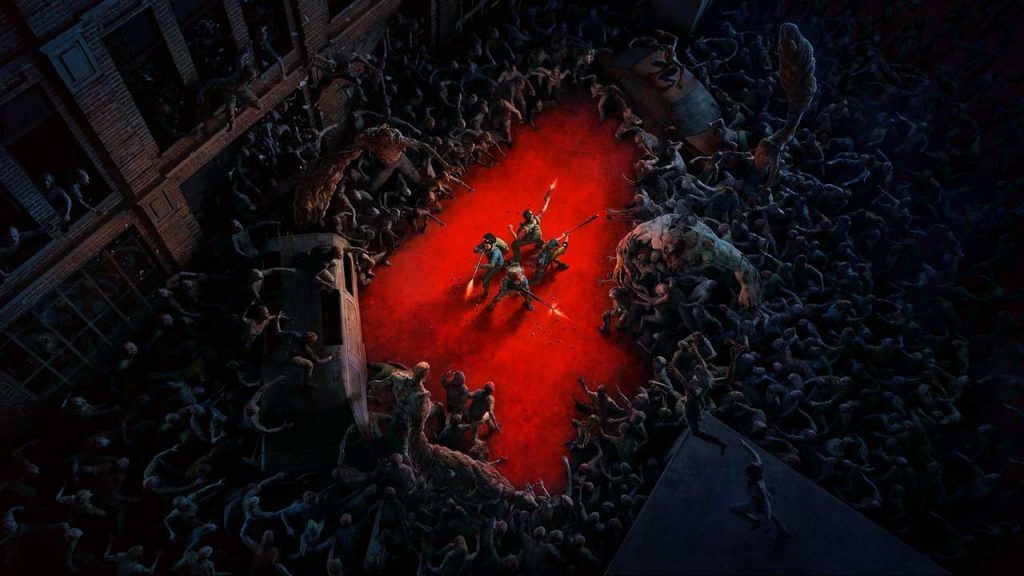When Back 4 Blood was announced back in 2019, the news was met with joyous rapture from players who remember Left 4 Dead (and its sequel) back in the day. Those who never played Turtle Rock’s two zombie apocalypse shooters may have just shrugged, which is fair enough. After all, given the number of zombie apocalypse games available, what’s there to get excited about when yet another one is announced?
But for the Left 4 Dead faithful, the eventual arrival of a four-player co-op zombie shooter was something they’d been looking forward to for years. The Left 4 Dead games are arguably two of the best FPS games released in the last two generations of gaming kit. They boast a legacy that Back 4 Blood will find it hard to live up to.
Back 4 Blood’s mountain to climb
There are many reasons for this, but chief among them is the fact that Left 4 Dead arrived at a time when competitive multiplayer – outside of esports at any rate – tended to be pretty one-note. That’s not to say a lot of them weren’t fantastic – they were and still are. It’s to say that players tended to be a little too self-interested. Whether players were engaged in a match that was a variation of Domination, Capture The Flag, Team Deathmatch, and more, in a lot of instances, it was every player for themselves.
Entering a public lobby potentially put really good players in the company of noobs and, depending on how quickly they adapted, the former could find their chances of victory hamstrung by the latter.
Co-op shooters could also be problematic; players could become frustrated by members of their team hoovering up all the guns, ammo and health packs and hoarding them, leaving the rest of the team on the back foot. Even when this wasn’t an issue, the lack of cohesion between teammates could be a problem; Bulletstorm’s multiplayer was great in theory, for example, but if the majority of the players didn’t know about the connection between stylish kills and advancement, the experience ended up being frustrating.
Work as a team or die
The Left 4 Dead games cut through all of these problems by presenting players with a brutally simple premise: if you all don’t work together, you are going to die. Faced with a rabid rank-and-file zombie horde and a couple of variants that brought the pain in back-breaking fashion, players had to work as a team.
This meant sharing ammo, sharing health packs, running to the rescue of a fallen comrade, and generally playing ball with each other. Lone wolves who refused to do this were quickly kicked from the gaming lobby – even if they all started off in a public match. If said lone wolf was the host, they quickly found all the other players leaving.
A broken world with decent people
Adding to this delightful core experience were a set of exceptionally well-rounded and interesting characters and world-building that was off the scale. For a couple of games with very little story – four poor sods meet up and try to survive – the Left 4 Dead games’ team member made an inedible impression on players. Perhaps it’s because, in both games, the characters were so different from each other – really, before the breakdown of society, these people would have never crossed paths. (My favourite was Nick from Left 4 Dead 2, by the way.)
As was mentioned, special kudos need to be awarded to the team in charge of creating the world these characters inhabited. Apparently taking their inspiration from how the viral epidemic in 1918 affected Spain (the Spanish Flu), Left 4 Dead’s writers succeeded in creating a world in which desperation and panic were palpable – and not just for the players trying to stay alive in it. The environments in the games presented a picture of an eerie, broken-down landscape; this was a world that hadn’t completely collapsed but was in the process of doing so.
Everything from deserted streets (save for the horde) to a burning building, to a hospital having fallen apart, conveyed a sense of hopelessness. Every second wall was scrawled with graffiti messages ranging from helpful to deranged. The developers even had time to toss in vocal and visual references to horror movies and games. The score, while sparse, fit the bill perfectly.
The zombie-ridden road ahead
It’s been a long time since players saw the like of Left 4 Dead, so Back 4 Blood has a lot to live up to. Beyond the gunplay, the card system, the structure (well reported on in this publication), Turtle Rock’s spiritual successor has a big hill to climb. The audience is there – well for the minute – but it’ll be interesting to see how many L4D vets take to it. Well, at least The Witch is nowhere to be seen… yet.




